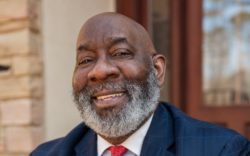Eight years have flown by. In 2010, Athens was wrangling over the size of a new jail and whether to add on to the Classic Center. Now it’s almost time to start thinking about the next round of projects the community wants to fund with a 1 percent sales tax—if voters want to continue the tax at all.
Yes, Athens just had a referendum on a sales tax. But that was a different one: T-SPLOST, specifically for roads and such. This one is another good ol’ regular SPLOST (Special Purpose Local Option Sales Tax), which can pay for just about any kind of capital expense, like equipment or buildings or roads, too, although not government workers’ salaries or other operating expenses.
Local governments can choose a SPLOST that lasts a certain amount of time (up to six years) or until a certain amount of money is raised. Last time, ACC officials chose the “fixed amount” option for $195 million (which will end up taking about nine years to raise) because of a couple of big-ticket items. The Clarke County Jail and Classic Center expansions accounted for half that total.
The $70 million jail, especially, was considered a priority at the time. The old jail was overcrowded, parts were crumbling and working conditions were poor. A lawsuit at some point was inevitable. Since then, a combination of state and local criminal justice reforms have reduced the number of inmates, and even fewer people are likely to be incarcerated under incoming mayor Kelly Girtz, so as it turns out the new jail didn’t need to be as big as it is—but that’s another story.
This time, there’s nothing so expensive or pressing on the horizon, which will free up money for other projects. A six-year SPLOST running from 2021–2026 is currently projected to bring in $159 million. What could that money be spent on? Here are some early ideas:
• Classic Center Executive Director Paul Cramer is expected to make a pitch for a downtown arena. The price tag for a 7,000-seat arena is $70 million, according to a 2017 study, and Cramer has said he will seek at least partial SPLOST funding. But the same study found that such an arena—which could host concerts, athletic events and trade shows that draw from a large region—would have a $35 million economic impact annually. The recent approval of a 10,000-seat amphitheater off Commerce Road could alter those numbers, though.
• Commissioners have been informally discussing the idea of building a government complex. Details like size, cost (somewhere between $20 million–$60 million) and location are unknown at this point, but such a complex would bring together under one roof various county government offices currently scattered among City Hall, the courthouse, Dougherty Street, Satula Avenue, Lexington Road and other locations..
• Parks are always popular with voters, and the Leisure Services Department is working on new master plans for Memorial Park and Bishop Park. The plan for Memorial Park calls for a new building to house the Athens Creative Theatre, a small parking deck, a larger dog park, renovations to Bear Hollow Zoo and other improvements.
Officials are also wrapping up a master plan for 44-year-old Bishop Park. “This park needs some love, and it needs it quickly,” Parks Administrator Mel Cochran Davis told commissioners last week; facilities are aging, the design is inefficient, and flooding is common because of inadequate stormwater drainage. Currently the plan calls for tripling the size of the gymnastics building, revamped parking and new amenities like a splash pad.
Commissioner Jerry NeSmith is pushing to move the gymnastics facility to the Atlanta Highway district he represents. “There is no playground on the Westside. Zero. None,” he said. The gym “could be the cornerstone to a new park.” But where?
• Three other, smaller parks are also part of the 2014 downtown master plan. One would involve tearing up the parking lot next door to City Hall and converting it into a park. (There is still SPLOST 2005 funding available for the City Hall block that was never spent because commissioners couldn’t agree on a plan.) Another calls for converting the stormwater detention area in front of the Multimodal Center on East Broad Street into a park. The third is a riverwalk along the North Oconee near Potterytown, the old mill neighborhood at East Broad and Wilkerson streets.
• The downtown master plan also includes several transportation projects that weren’t included in T-SPLOST: a traffic circle at the Dougherty Street/Thomas Street/North Avenue intersection, which could both improve traffic flow and serve as a gateway into downtown; an “art walk,” or wide sidewalk lined with public art along Jackson Street leading to the Lyndon House Arts Center, that would serve as a leg of a “cultural trail” also connecting the Morton Theatre and Classic Center; and a similar promenade along College Avenue. David Lynn, the Athens Downtown Development Authority’s director of planning and outreach, briefed the ADDA board on those projects last week.
Mayor Nancy Denson, though, raised concerns that voters might not want to spend sales-tax dollars on transportation projects so soon after approving a new tax specifically for transportation. “It’s going to be like, ‘We just voted on another penny for that.’ It’s going to be a hard sell,” she said.
• Then there’s the third rail of Athens politics: closing College Square to vehicles. It’s been discussed since the 1970s, with downtown merchants consistently opposing it because they don’t want to lose the parking spaces, and is so toxic that downtown master plan guru Jack Crowley wouldn’t even consider whether to include it. But business owners are now “getting more progressive” about the idea, said Jennifer Zwirn, president of the Downtown Athens Business Association.
• Another possibility for downtown is another parking deck. Several years ago, then-ADDA director Pamela Thompson floated the idea because many downtown buildings had been renovated into apartments, but they had no parking, so downtown decks were filling up with new residents’ cars. However, Lynn didn’t include a parking deck in his presentation. “We’re not sure a parking deck will appeal enough to voters to put on a SPLOST,” he said.
• While voters did just agree to spend more than $100 million on transportation projects over the next five years, that won’t even come close to funding all of the projects that are on the books. “Athens in Motion,” the nearly completed bike-and-pedestrian plan update, includes 117 new sidewalks and bike lanes throughout the county. But the $11 million set aside in T-SPLOST for pedestrian infrastructure won’t even cover the cost of building the first tier of Athens in Motion sidewalks, even if all of those projects are built as cheaply as possible, according to cost estimates included in the draft plan. At a total cost of $13 million–$51 million for the first tier of bike projects, T-SPLOST’s $6 million for bike infrastructure will barely put a dent in it.
Those estimates only cover construction, not design or buying right-of-way, according to Jared Draper of consultant Toole Design Group. They vary so widely because the consultants—who worked closely with a committee of locals to craft the plan—wanted to give ACC officials several options at each location so they can decide how to get the best bang for their buck.
Each project was scored based on criteria like vehicle speed, number of road lanes and connectivity with other bike and walking infrastructure, then divided into five tiers. “We don’t want islands of infrastructure no one can get to or from,” Draper told commissioners at last week’s work session. And what works in one part of town might not work in another. “If you’re downtown, the user might be very different than in a rural area, so the infrastructure needs to match that,” Draper said.
The Athens in Motion study also recommends hiring a bike and pedestrian coordinator (which many cities, like Atlanta, have already done), appointing a permanent advisory committee, instituting design guidelines and implementing “Vision Zero,” a commitment to eliminating traffic deaths altogether. “We can design better,” said another Toole consultant, Ernie Bowman. “We can design around a lot of the crash potential.”
But design isn’t the only factor, Bowman added. “We need infrastructure, but we also need education. We need safety. We need to reduce crashes throughout the community.”
Again, these are just previews of SPLOST projects that might potentially come up. Food for thought. The formal process won’t start until the August/September commission cycle, when Denson will appoint a citizens advisory committee to vet and recommend projects. The committee will accept proposals—from the government, other groups and ordinary citizens—in the fall, when more details will emerge. Those projects will go through several rounds of cuts and public and commission input until the committee makes a recommendation to the mayor and commission in May. The commission can (and, if history is any indication, probably will) tweak the list before approving it to be put before voters in November 2019.
Like what you just read? Support Flagpole by making a donation today. Every dollar you give helps fund our ongoing mission to provide Athens with quality, independent journalism.










